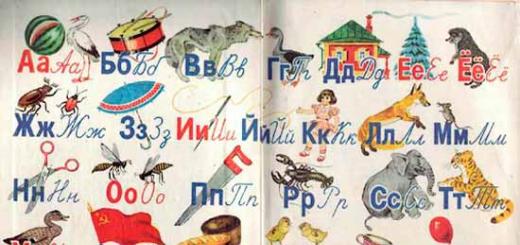Humanity began to actively use metals back in 3000-4000 BC. Then people became acquainted with the most common of them: gold, silver, copper. These metals were very easy to find on the surface of the earth. A little later they learned about chemistry and began to isolate such species as tin, lead and iron. In the Middle Ages, very poisonous types of metals gained popularity. There was arsenic in use, which poisoned more than half of the royal court in France. Likewise, which helped cure various diseases of those times, from sore throat to the plague. Already before the twentieth century, more than 60 metals were known, and at the beginning of the 21st century - 90. Progress does not stand still and leads humanity forward. But the question arises, which metal is heavy and weighs more than all the others? And in general, what are they, these heaviest metals in the world?
Many people mistakenly think that gold and lead are the heaviest metals. Why exactly did this happen? Many of us grew up watching old movies and seeing the main character using a lead plate to protect himself from vicious bullets. In addition, lead plates are still used today in some types of body armor. And when you hear the word gold, many people think of a picture of heavy ingots of this metal. But thinking that they are the heaviest is a mistake!
To determine the heaviest metal, one must take into account its density, because the higher the density of a substance, the heavier it is.
TOP 10 heaviest metals in the world
- Osmium (22.62 g/cm3),
- Iridium (22.53 g/cm3),
- Platinum (21.44 g/cm3),
- Rhenium (21.01 g/cm3),
- Neptunium (20.48 g/cm3),
- Plutonium (19.85 g/cm3),
- Gold (19.85 g/cm3)
- Tungsten (19.21 g/cm3),
- Uranium (18.92 g/cm3),
- Tantalum (16.64 g/cm3).
And where is the lead? And he is located much lower on this list, in the middle of the second ten.
Osmium and iridium are the heaviest metals in the world
Let's look at the main heavyweights who share 1st and 2nd places. Let's start with iridium and at the same time say words of gratitude to the English scientist Smithson Tennat, who in 1803 obtained this chemical element from platinum, where it was present along with osmium as an impurity. Iridium can be translated from ancient Greek as “rainbow”. The metal is white with a silver tint and can be called not only the heaviest, but also the most durable. There is very little of it on our planet and only up to 10,000 kg are mined per year. It is known that most iridium deposits can be found at meteorite impact sites. Some scientists come to the conclusion that this metal was previously widespread on our planet, but due to its weight, it constantly squeezed itself closer to the center of the Earth. Iridium is now widely in demand in industry and is used to generate electrical energy. Paleontologists also like to use it, and with the help of iridium they determine the age of many finds. In addition, this metal can be used to coat some surfaces. But this is difficult to do.

Next, let's look at osmium. It is the heaviest in the periodic table of Mendeleev, and, accordingly, the heaviest metal in the world. Osmium is tin-white with a blue tint and was also discovered by Smithson Tennat at the same time as iridium. Osmium is almost impossible to process and is mainly found at meteorite impact sites. It smells unpleasant, the smell is like a mixture of chlorine and garlic. And from ancient Greek it is translated as “smell”. The metal is quite refractory and is used in light bulbs and other devices with refractory metals. For just one gram of this element you have to pay more than $10,000, which makes it clear that the metal is very rare.
 Osmium
Osmium Whatever one may say, the heaviest metals are very rare and therefore they are expensive. And we must remember for the future that neither gold nor lead are the heaviest metals in the world! Iridium and osmium are the winners in weight!

Among the wonders hidden in the depths of the universe, a small star near Sirius will probably forever retain one of its significant places. This star is made of matter 60,000 times heavier than water! When we pick up a glass of mercury, we are surprised by how heavy it is: it weighs about 3 kg. But what would we say about a glass of a substance that weighs 12 tons and requires a railway platform to transport? This seems absurd, and yet this is one of the discoveries of modern astronomy.
This discovery has a long and highly instructive history. It has long been noticed that the brilliant Sirius makes its own movement among the stars not in a straight line, like most other stars, but along a strange winding path. To explain these features of its movement, the famous astronomer Bessel suggested that Sirius is accompanied by a satellite, which “disturbs” its movement with its attraction. This was in 1844 - two years before Neptune was discovered "at the tip of a pen." And in 1862, after Bessel’s death, his guess was fully confirmed, since the suspected satellite of Sirius was seen through a telescope.
The satellite of Sirius - the so-called "Sirius B" - orbits the main star at 49 years at a distance 20 times greater than the Earth around the Sun (i.e., approximately at the distance of Uranus). This is a faint star of the eighth or ninth magnitude, but its mass is very impressive, almost 0.8 times the mass of our Sun. At the distance of Sirius, our Sun would be shining as a 1.8th magnitude star; therefore, if the satellite of Sirius had a surface reduced in comparison with the solar one in accordance with the ratio of the masses of these luminaries, then at the same temperature it would have to shine like a star of approximately the second magnitude, and not the eighth or ninth. Astronomers initially attributed such a weak brightness to the low temperature on the surface of this star; it was viewed as a cooling sun, becoming covered with a hard crust.
But this assumption turned out to be wrong. It was possible to establish that the modest satellite of Sirius is not a fading star at all, but, on the contrary, belongs to stars with a high surface temperature, much higher than that of our Sun. This changes things completely. The weak brightness must therefore be attributed only to the small size of the surface of this star. It is calculated that it sends out 360 times less light than the Sun; This means that its surface must be at least 360 times smaller than the solar one, and its radius must be j/360, i.e. 19 times smaller than the solar one. From this we conclude that the volume of the Sirius satellite should be less than 6800th of the volume of the Sun, while its mass is almost 0.8 of the mass of the daylight star. This alone indicates the high density of the matter of this star. A more accurate calculation gives for the diameter of the planet only 40,000 km, and therefore for the density - the monstrous number that we gave at the beginning of the section: 60,000 times the density of water.
“Prick up your ears, physicists: an invasion of your field is being planned,” comes to mind the words of Kepler, spoken by him, however, on a different occasion. Indeed, no physicist could have imagined anything like this until now. Under ordinary conditions, such a significant compaction is completely unthinkable, since the spaces between normal atoms in solids are too small to allow any noticeable compression of their substance. The situation is different in the case of “mutilated” atoms, which have lost those electrons that were circling around the nuclei. The loss of electrons reduces the diameter of the atom by several thousand times, almost without reducing its weight; the exposed nucleus is smaller than a normal atom by about the same amount as a fly is smaller than a large building. Shifted by the monstrous pressure prevailing in the depths of the stellar globe, these reduced atom-nuclei can come together thousands of times closer than normal atoms, and create a substance of the unheard-of density that is found on the satellite of Sirius.
After what has been said, it will not seem incredible to discover a star whose average density of matter is still 500 times greater than that of the previously mentioned star Sirius B. We are talking about a small star of the 13th magnitude in the constellation Cassiopeia, discovered at the end of 1935. Being in volume no larger than Mars and eight times smaller than the Earth, this star has a mass almost three times the mass of our Sun (more precisely, 2.8 times). In ordinary units, the average density of its substance is expressed as 36,000,000 g/cm3. This means that 1 cm3 of such a substance would weigh 36 tons on Earth. This substance, therefore, is almost 2 million times denser than gold.
A few years ago, scientists, of course, would have considered the existence of a substance millions of times denser than platinum unthinkable. The abysses of the universe probably hide many more similar wonders of nature.
The most expensive metal in the world and the densest substance on the planet
Posted 02/01/2012 (valid until 02/01/2013)
There are a lot of different metals and precious stones in nature, the cost of which is very high for most of the planet's inhabitants. People more or less have an idea about precious stones, which are the most expensive, which are most valued. But, this is how things are with metals; most people, besides gold and platinum, no longer know expensive metals. What is the most expensive metal in the world? People's curiosity knows no bounds; they are looking for answers to the most interesting questions. Finding out the cost of the most expensive metal on the planet is not a problem, since this is not secret information.

Most likely, this is the first time you have heard this name - Osmium isotope 1870s. This chemical element is the most expensive metal in the world. You may have seen the name of such a chemical element in the periodic table under number 76. The Osmium isotope is the densest substance on the planet. Its density is 22.61 g/cm3. Under normal standard conditions, osmium is silvery in color and has a pungent odor. This metal belongs to the group of platinum metals. This metal is used in the production of nuclear weapons, pharmaceuticals, aerospace, and sometimes in jewelry.
But now the main question is: how much does the most expensive metal in the world cost? Now its cost on the black market is $200,000 per gram. Since obtaining the 1870s isotope is a very difficult task, few people will undertake this task. Previously, in 2004, Kazakhstan officially offered one gram of pure Osmium isotope for $10,000. Kazakhstan at one time became the first expert in expensive metal; no other country offered this metal for sale.

Osmium was discovered by the English chemist Smithson Tennant in 1804. Osmium is obtained from enriched raw materials of platinum metals by calcining this concentrate in air at temperatures of 800-900 degrees Celsius. And scientists are still adding to the periodic table, obtaining elements with incredible properties.
Many will say that there is an even more expensive metal - California 252. The price of California 252 is $6,500,000 per 1 gram. But it is worth considering the fact that the world supply of this metal is only a few grams. Since it is produced only in two reactors in Russia and the USA, 20-40 micrograms per year. But its properties are very impressive: 1 µg of californium produces more than 2 million neutrons per second. In recent years, this metal has been used in medicine as a point source of neutrons for local treatment of malignant tumors.
1. The blackest matter known to manWhat happens if you stack the edges of carbon nanotubes on top of each other and alternate layers of them? The result is a material that absorbs 99.9% of the light that hits it. The microscopic surface of the material is uneven and rough, which refracts light and is also a poor reflective surface. After that, try using carbon nanotubes as superconductors in a specific order, which makes them excellent light absorbers, and you'll get a real black storm. Scientists are seriously puzzled by the potential uses of this substance, since, in fact, light is not “lost”, the substance could be used to improve optical devices such as telescopes and even be used for solar cells operating at almost 100% efficiency.
2. The most flammable substance
Lots of things burn at an astonishing rate, such as styrofoam, napalm, and that's just the beginning. But what if there was a substance that could set the earth on fire? On the one hand, this is a provocative question, but it was asked as a starting point. Chlorine trifluoride has the dubious reputation of being a horribly flammable substance, even though the Nazis believed the substance was too dangerous to work with. When people who discuss genocide believe that their purpose in life is not to use something because it is too lethal, it supports careful handling of these substances. They say that one day a ton of the substance spilled and a fire started, and 30.5 cm of concrete and a meter of sand and gravel burned out until everything calmed down. Unfortunately, the Nazis were right.
3. The most poisonous substance
Tell me, what would you least like to get on your face? This could well be the deadliest poison, which would rightfully take 3rd place among the main extreme substances. Such a poison is indeed different from what burns through concrete, and from the strongest acid in the world (which will soon be invented). Although not entirely true, you have all undoubtedly heard from the medical community about Botox, and thanks to it, the deadliest poison has become famous. Botox uses botulinum toxin, produced by the bacterium Clostridium botulinum, and it is very deadly, with the amount of a grain of salt being enough to kill a 200-pound person. In fact, scientists have calculated that spraying just 4 kg of this substance is enough to kill all people on earth. An eagle would probably treat a rattlesnake much more humanely than this poison would treat a person.
4. The hottest substance
There are very few things in the world known to man that are hotter than the inside of a freshly microwaved Hot Pocket, but this stuff looks set to break that record too. Created by colliding gold atoms at nearly the speed of light, the substance is called quark-gluon "soup" and reaches a crazy 4 trillion degrees Celsius, which is almost 250,000 times hotter than the stuff inside the Sun. The amount of energy released during the collision would be enough to melt protons and neutrons, which itself has features you wouldn't even suspect. Scientists say this material could give us a glimpse of what the birth of our universe was like, so it's worth understanding that tiny supernovae aren't created for fun. However, the really good news is that the "soup" took up one trillionth of a centimeter and lasted for a trillionth of one trillionth of a second.
5. The most caustic acid
Acid is a terrible substance, one of the scariest monsters in cinema was given acid blood to make him even more terrible than just a killing machine (Alien), so it is ingrained within us that exposure to acid is a very bad thing. If the "aliens" were filled with fluoride-antimony acid, not only would they fall deep through the floor, but the fumes emitted from their dead bodies would kill everything around them. This acid is 21019 times stronger than sulfuric acid and can seep through glass. And it can explode if you add water. And during its reaction, toxic fumes are released that can kill anyone in the room.
6. The most explosive explosive
In fact, this place is currently shared by two components: HMX and heptanitrocubane. Heptanitrocubane mainly exists in laboratories, and is similar to HMX, but has a denser crystal structure, which carries a greater potential for destruction. HMX, on the other hand, exists in large enough quantities that it can threaten physical existence. It is used in solid fuel for rockets, and even for nuclear weapons detonators. And the last one is the worst, because despite how easily it happens in the movies, starting the fission/fusion reaction that results in bright glowing nuclear clouds that look like mushrooms is not an easy task, but HMX does it perfectly.
7. The most radioactive substance
Speaking of radiation, it's worth mentioning that the glowing green "plutonium" rods shown in The Simpsons are just fiction. Just because something is radioactive doesn't mean it glows. It's worth mentioning because polonium-210 is so radioactive that it glows blue. Former Soviet spy Alexander Litvinenko was misled into having the substance added to his food and died of cancer soon after. This is not something you want to joke about; the glow is caused by the air around the material being affected by radiation, and, in fact, objects around it can heat up. When we say “radiation,” we think, for example, of a nuclear reactor or explosion where a fission reaction actually occurs. This is only the release of ionized particles, and not the out-of-control splitting of atoms.
8. The heaviest substance
If you thought the heaviest substance on Earth was diamonds, it was a good but inaccurate guess. This is a technically engineered diamond nanorod. It is actually a collection of nano-scale diamonds, the least compressed and the heaviest substance known to man. It doesn't actually exist, but that would be pretty handy since it means that someday we could cover our cars with this stuff and just get rid of it when a train collision occurs (not a realistic event). This substance was invented in Germany in 2005 and will probably be used to the same extent as industrial diamonds, except that the new substance is more resistant to wear and tear than regular diamonds.
9. The most magnetic substance
If the inductor were a small black piece, then it would be the same substance. The substance, developed in 2010 from iron and nitrogen, has magnetic powers that are 18% greater than the previous record holder and is so powerful that it has forced scientists to reconsider how magnetism works. The person who discovered this substance distanced himself from his studies so that no other scientist could reproduce his work, since it was reported that a similar compound was developed in Japan in the past in 1996, but other physicists could not reproduce it, so this substance was not officially accepted. It is unclear whether Japanese physicists should promise to make Sepuku under these circumstances. If this substance can be reproduced, it could herald a new age of efficient electronics and magnetic motors, perhaps enhanced in power by an order of magnitude.
10. The strongest superfluidity
Superfluidity is a state of matter (either solid or gaseous) that occurs at extremely low temperatures, has high thermal conductivity (every ounce of that substance must be at exactly the same temperature) and no viscosity. Helium-2 is the most typical representative. The helium-2 cup will spontaneously rise and spill out of the container. Helium-2 will also leak through other solid materials, as the complete lack of friction allows it to flow through other invisible holes that regular helium (or water for that matter) would not leak through. Helium-2 does not come into its proper state at number 1, as if it has the ability to act on its own, although it is also the most efficient thermal conductor on Earth, several hundred times better than copper. Heat moves so quickly through Helium-2 that it travels in waves, like sound (known actually as "second sound"), rather than being dissipated, where it simply moves from one molecule to another. By the way, the forces that control the ability of helium-2 to crawl along the wall are called the “third sound.” You're unlikely to get anything more extreme than a substance that required the definition of 2 new types of sound.
Since time immemorial, people have been actively using various metals. After studying their properties, the substances took their rightful place in the table of the famous D. Mendeleev. Scientists are still arguing about the question of which metal should be given the title of the heaviest and densest in the world. There are two elements in the balance on the periodic table – iridium and osmium. Why they are interesting, read on.
For centuries, people have been studying the beneficial properties of the most common metals on the planet. Science stores the most information about gold, silver and copper. Over time, humanity became acquainted with iron and lighter metals - tin and lead. In the world of the Middle Ages, people actively used arsenic, and diseases were treated with mercury.
Thanks to rapid progress, today the heaviest and densest metals are considered not just one element of the table, but two at once. At number 76 is osmium (Os), and at number 77 is iridium (Ir), the substances have the following density indicators:
- osmium is heavy, due to its density of 22.62 g/cm³;
- iridium is not much lighter - 22.53 g/cm³.
Density is one of the physical properties of metals; it is the ratio of the mass of a substance to its volume. Theoretical calculations of the density of both elements have some errors, so both metals are today considered to be the heaviest.
For clarity, you can compare the weight of an ordinary cork with the weight of a cork made of the heaviest metal in the world. To balance the scales with a stopper made of osmium or iridium, you will need more than a hundred ordinary stoppers.
History of the discovery of metals
Both elements were discovered at the dawn of the 19th century by the scientist Smithson Tennant. Many researchers of that time were studying the properties of raw platinum, treating it with “regia vodka”. Only Tennant was able to detect two chemical substances in the resulting sediment:
- The scientist named the sedimentary element with a persistent smell of chlorine osmium;
- a substance with changing colors was called iridium (rainbow).
Both elements were represented by a single alloy, which the scientist managed to separate. Further research into platinum nuggets was undertaken by the Russian chemist K. Klaus, who carefully studied the properties of sedimentary elements. The difficulty in determining the heaviest metal in the world lies in the low difference in their density, which is not a constant value.

Vivid characteristics of the densest metals
The substances obtained experimentally are powders that are quite difficult to process; forging metals requires very high temperatures. The most common form of the combination of iridium and osmium is the alloy of osmic iridium, which is mined in platinum deposits and gold strata.
The most common places where iridium is found are meteorites rich in iron. Native osmium cannot be found in the natural world, only in collaboration with iridium and other components of the platinum group. Deposits often contain sulfur and arsenic compounds.
Features of the heaviest and most expensive metal in the world
Among the elements of Mendeleev's periodic table, osmium is considered the most expensive. The silvery metal with a bluish tint belongs to the platinum group of noble chemical compounds. The densest, but very brittle metal does not lose its shine under the influence of high temperatures.

Characteristics
- Element #76 Osmium has an atomic mass of 190.23 amu;
- A substance molten at a temperature of 3033°C will boil at 5012°C.
- The heaviest material has a density of 22.62 g/cm³;
- The structure of the crystal lattice has a hexagonal shape.
Despite the amazingly cold shine of silver tint, osmium is not suitable for the production of jewelry due to its high toxicity. Melting the jewelry would require a temperature similar to the surface of the Sun, since the densest metal in the world is destroyed by mechanical stress.
Turning into powder, osmium interacts with oxygen, reacts to sulfur, phosphorus, selenium; the reaction of the substance to aqua regia is very slow. Osmium does not have magnetism; alloys tend to oxidize and form cluster compounds.

Where is it used?
The heaviest and incredibly dense metal has high wear resistance, so adding it to alloys significantly increases their strength. The use of osmium is mainly associated with the chemical industry. In addition, it is used for the following needs:
- manufacturing containers intended for storing nuclear fusion waste;
- for the needs of rocket science, weapons production (warheads);
- in the watch industry for the manufacture of movements of branded models;
- for the manufacture of surgical implants, parts of pacemakers.
Interestingly, the densest metal is considered the only element in the world that is not subject to the aggression of the “hellish” mixture of acids (nitric and hydrochloric). Aluminum combined with osmium becomes so ductile that it can be pulled without breaking.
Secrets of the world's rarest and densest metal
The fact that iridium belongs to the platinum group gives it the property of immunity to treatment with acids and their mixtures. In the world, iridium is obtained from anode sludge during copper-nickel production. After treating the sludge with aqua regia, the resulting precipitate is calcined, resulting in the extraction of iridium.

Characteristics
The hardest silver-white metal has the following group of properties:
- periodic table element Iridium No. 77 has an atomic mass of 192.22 amu;
- a substance melted at a temperature of 2466°C will boil at 4428°C;
- density of molten iridium – within 19.39 g/cm³;
- element density at room temperature – 22.7 g/cm³;
- The iridium crystal lattice is associated with a face-centered cube.
Heavy iridium does not change under the influence of normal air temperature. The result of calcination under the influence of heat at certain temperatures is the formation of multivalent compounds. The powder of fresh sediment of iridium black can be partially dissolved with aqua regia, as well as with a chlorine solution.

Application area
Although Iridium is a precious metal, it is rarely used for jewelry. The element, which is difficult to process, is in great demand in the construction of roads and the production of automobile parts. Alloys with the densest metal that is not susceptible to oxidation are used for the following purposes:
- manufacturing crucibles for laboratory experiments;
- production of special mouthpieces for glass blowers;
- covering the tips of pens and ballpoint pens;
- production of durable spark plugs for cars;
Alloys with iridium isotopes are used in welding production, in instrument making, and for growing crystals as part of laser technology. The use of the heaviest metal made it possible to carry out laser vision correction, crushing kidney stones and other medical procedures.
Although Iridium is non-toxic and not dangerous to biological organisms, its dangerous isotope, hexafluoride, can be found in the natural environment. Inhalation of toxic vapors leads to instant suffocation and death.
Places of natural occurrence
Deposits of the densest metal Iridium in the natural world are negligible, much smaller than reserves of platinum. Presumably the heaviest substance has shifted to the core of the planet, so the volume of industrial production of the element is small (about three tons per year). Products made from iridium alloys can last up to 200 years, making jewelry more durable.

Nuggets of the heaviest metal with an unpleasant odor, Osmium, cannot be found in nature. In the composition of the minerals, traces of osmic iridium can be found along with platinum, palladium, and ruthenium. Deposits of osmic iridium have been explored in Siberia (Russia), some states of America (Alaska and California), Australia and South Africa.
If deposits of platinum are discovered, it will be possible to isolate osmium with iridium to strengthen and strengthen the physical or chemical compounds of various products.










